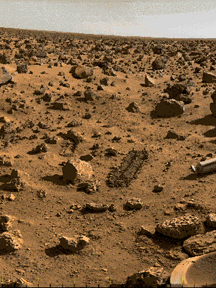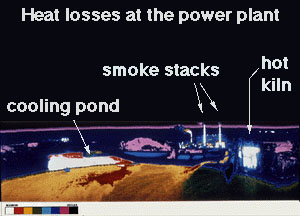Exploratour - Life in the Solar System
Click on image for full size
NASA
Mars is small, so there is not much gravity. For this reason, much of the atmosphere of Mars has drifted away. The Viking lander, which carried the first experiments designed to detect life on Mars, did not find evidence of even the simplest organic molecule. Unlike Earth, Mars has always lacked the protection from ultraviolet light provided by oxygen. With little atmosphere, and no ozone layer, there is less protection from the ultraviolet radiation of the sun, which is very harmful to life.
With little atmosphere, there is a only a small buffer between the surface and space itself. This means that the temperature above the surface is cold. With little atmosphere, there is only a little pressure, which sophisticated life forms such as humans need to keep blood from boiling. (Remember what happened to the characters of the movie "Total Recall" when they encountered the surface of Mars)!
We know, however, that there are life forms on earth which can survive in very harsh environments. You can leave this tour and read more about these terrestrial life forms by connecting to the Exploratour on Life on Earth, at the bottom of this page. Or you can connect to the section on Mars exploration and read more about the Viking experiments.
This is page 6 of 20












